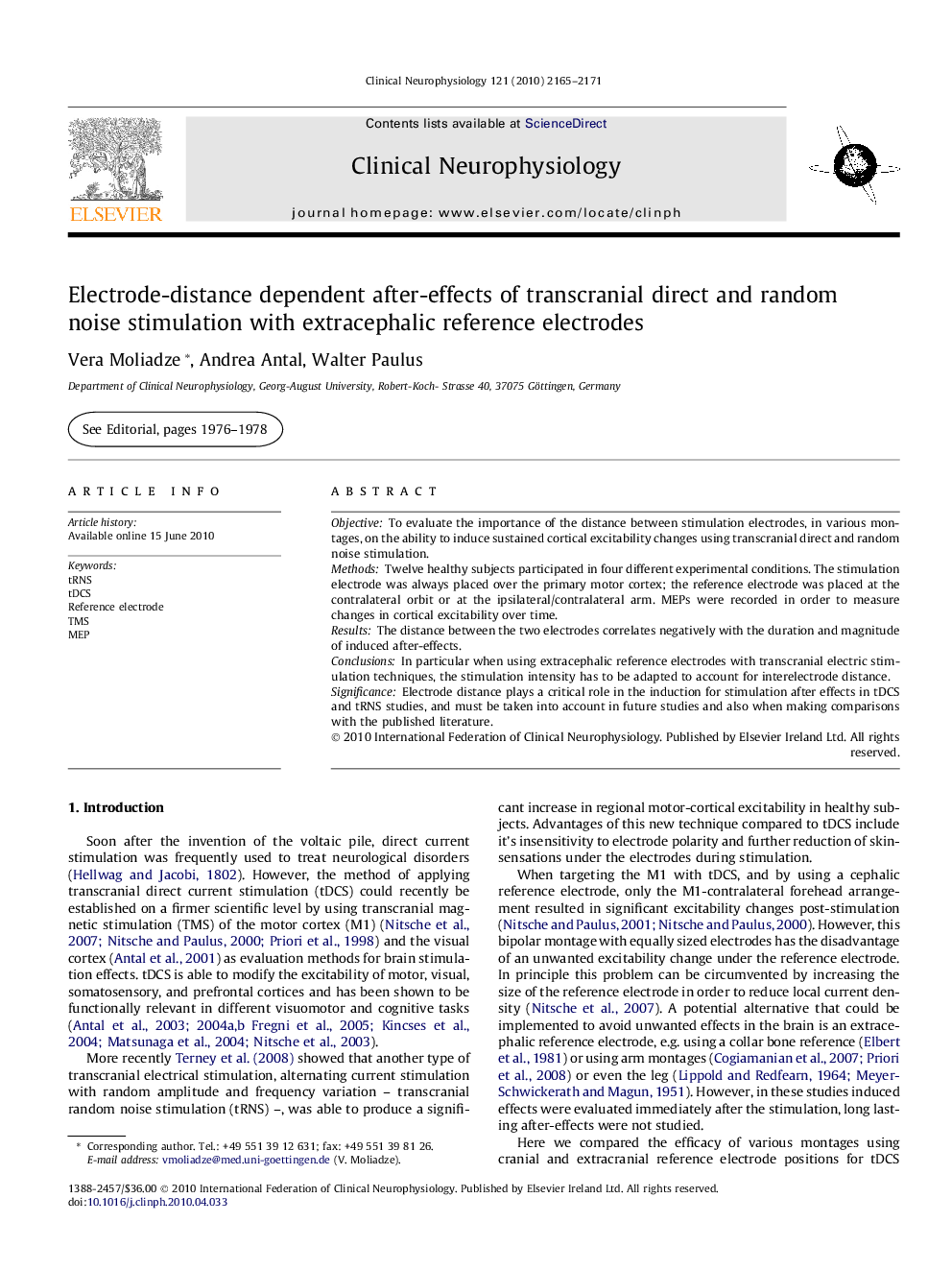| Article ID | Journal | Published Year | Pages | File Type |
|---|---|---|---|---|
| 3044445 | Clinical Neurophysiology | 2010 | 7 Pages |
ObjectiveTo evaluate the importance of the distance between stimulation electrodes, in various montages, on the ability to induce sustained cortical excitability changes using transcranial direct and random noise stimulation.MethodsTwelve healthy subjects participated in four different experimental conditions. The stimulation electrode was always placed over the primary motor cortex; the reference electrode was placed at the contralateral orbit or at the ipsilateral/contralateral arm. MEPs were recorded in order to measure changes in cortical excitability over time.ResultsThe distance between the two electrodes correlates negatively with the duration and magnitude of induced after-effects.ConclusionsIn particular when using extracephalic reference electrodes with transcranial electric stimulation techniques, the stimulation intensity has to be adapted to account for interelectrode distance.SignificanceElectrode distance plays a critical role in the induction for stimulation after-effects in tDCS and tRNS studies, and must be taken into account in future studies and also when making comparisons with the published literature.
